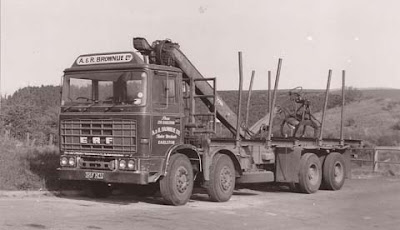Among the items donated to the Auld Earlston Group is a photocopy of the first edition of "The Earlston Comet", published Saturday October 10th, 1891.

‘88
Old newspapers are fascinating documents. They
enable us to "experience" events as they were recorded in the press of
the time, featuring "Local, District, London and Foreign Intelligence" . The advertisements can often be as interesting as the news.
As was the custom advertisements were given space on the front page for maximum impact. Taking a look at them here links in so well with an earlier blog post on Earlston's Shops.
So what were Earlston people being encouraged to buy in 1891?
Taking centre stage were promotions by the drapers and clothiers in the village, and we get a good description of what the well dressed man or woman would be wearing in the late 19th century.
Thomas Clendinnen & Sons, Drapers, Milliners and Clothiers announced their:
ANNUAL AUTUMN SALE,
For the whole of their stock, replete with all the latest novelties in Plain and Diagonal Serges, Homsepun, Twist, Knicker Checked and Striped, Dress Tweeds,
Ladies Jackets, Braemar and Russian Cloaks,
Trimmed Hat and Bonnets in Newest Style
White, Scarlet and Shetland Flannels
Gentleman's Tweed Suits - Made to Measure- From 37s.6p
New Melton and Diagonal Overcoats from 30s.
All garments carefully made and finished - Perfect Fit Guaranteed.
In the 1891 census, 32 year old draper
Thomas Clendinnen lived on the High Street with his 72 year old mother
Jane named as head of the household. The drapers was very much a family
business that included Thomas, his mother, his sister Marion, and
brothers Henry and Charles.
Miller's Drapers Establishment, offered competition with the claim:
"The largest and cheapest collection of Autumn and Winter drapery goods to
be seen in any warehouse in the South of Scotland.
The constant desire
is to supply goods of Reliable Quality
suitable for all classes of
the parish."
[Note that phrase "All classes of the parish" - you could not use that now!]

Also in the field of fashion was David Wallace, with:
"An Immense and Magnificent Collection of every New and Fashionable Dress Material....which for Variety, Superior Quality, Good Taste and Moderate Prices is unequalled in Earlston.
Tweeds in Cheviot, Homespun, Harris and Grampian makes, latest styles and newest mixtures, Black materials in great variety.
The latest novelties in Millinery, Flowers, Feathers etc. Bonnets composed of Velvet and Jet, from 10s.6d to 25s. The latest novelty in hats is Gladys in French Beaver, trimmed with Feathers. All orders for this Department made up in the most Fashionable and Tasteful Manner."
Note the reference to "black materials" - at a time when formal mourning wear was still the custom. Somehow the name "Gladys" does not quite conjure up an image of a French beaver hat with feathers!
Draper David Wallace
was listed in the 1891 census as at the High Street with his wife Ruth, two
young children Robert and Ruth, and eldest son Henry described as a
Draper's Apprentice.
*******
Money Values (see National Archives Currency Converter)
- 37s.6d for a gentleman's suit is equivalent to £112 in today's money.
- 30s for a gentleman's overcoat is equivalent to £90 today.
- Ladies hat prices ranged from 10s.6d (£32 today) to 25s (£74 today)
*******
Other advertisements on the front page of the newspaper promoted:
- Old Lamps and Stoves from Robert Lee & Sons, Family Grocers and Ironmongers
- Bootmakers, James Ballantyne, Thomas Nichol and Archibald Young all promised a large selection of boots, shoes and slippers with "Jobbing neatly and promptly executed"
- Horse Clothing, Whips, Spurs and all Stable Requisites were all available from John McDonald, Saddler & Harness Maker of Station Road (below).
**********
Background Information
Finding more information on "The Earlston Comet" proved a challenge, with the National Library of Scotland providing some answers, although it did not hold any copies of the title. But there was mention in "The Waterloo Directory of Scottish Newspapers and Periodicals, 1800-1900" , and "Mitchell's Annual Newspaper Press Directory".
The Earlston Comet" was published by William Norrie, with "frequency irregular" between 1891 and 1894. The Mitchell entry comments "The local and district intelligence is carefully given with notes and comments upon it. [The paper] advocates measures that are for the moral, social and industrial benefits of the community. The Earlston Comet is the only newspaper printed and published in Berwickshire" .
William Norrie adopted the name of "Waverley Press" for his business, and wrote and published in 1891 a book "Edinburgh Newspapers, Past and Present".
Apart from those points, William Norrie has proved very elusive with no information traced on him either in Edinburgh, Midlothian or the Border counties - surprising given that the 1891 census had taken place a few months before "The Earlston Comet" first appeared on the scene.
************
Look out for future articles on the "Earlston Comet"
with reports on local events, church activities, council meetings, School Bursury Awards, a coming General Election - plus a letter asking
"Is Public Spirit in Earlston Declining? How much changes!

















